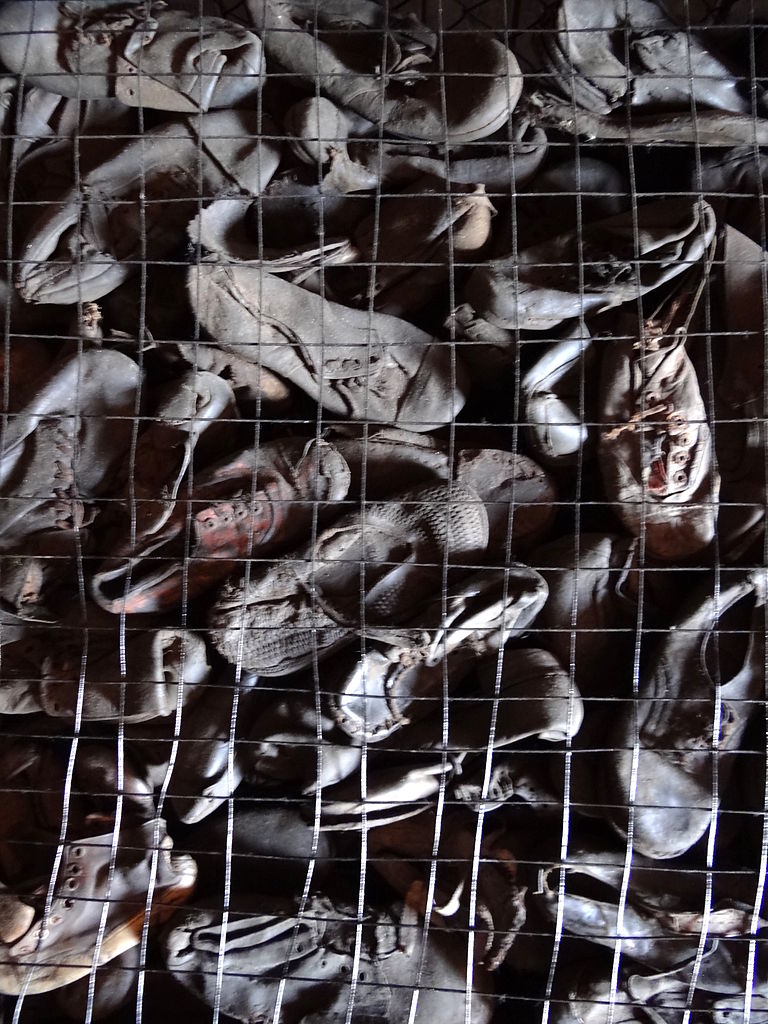This post is also available in: Français Español العربية فارسی Русский Türkçe
Did the cremation process at the Operation Reinhard death camps also destroy the teeth of victims?
Holocaust deniers claim:
If some 1,400,000 Jews had been murdered in the Operation Reinhard death camps of Treblinka, Belzec, and Sobibor, there would be millions of teeth in the graves at these sites.
For example, self-named “Denierbud,” an American Holocaust denier and YouTube video maker, cites fellow Holocaust denier Arnulf Neumaier when he comments that “. . . the teeth of the supposed victims could not have been destroyed by the primitive methods attested to . . . Even if each of the alleged victims had only 20 of the usual 32 teeth left at the time he or she died, there would have been at least 17.5 million teeth to be disposed of at Treblinka. This means that we should still be able to find some 5 teeth per cubic foot of the 3.53 million cubic feet of material excavated at the alleged site of the crime.”[1]
The facts are:
The research of forensic dentists—whose business it is to know what happens to teeth in extreme conditions—shows that in fires with temperatures high enough to cremate bodies, most human teeth are destroyed. Any remaining teeth are severely weakened and, thus, are more easily ground to dust over time.
What we know about the destruction of teeth by fire:
The destruction of teeth by fire is a matter of professional interest to forensic dentists involved in the identification of bodies. A study conducted by German forensic dentists in 2001 found the following:
- After 30 minutes in fires with temperatures of 752 degrees Fahrenheit (400 degrees Celsius) the front teeth are totally destroyed and the molars start to crack.
- 45 to 70 minutes in fires with temperatures between 1832 degrees Fahrenheit (1000 degrees Celsius) and 2012 degrees Fahrenheit (1100 degrees Celsius), all teeth are totally carbonized.[2]
- In a civilian cremation furnace, a temperature between 1400 to 2100 degrees Fahrenheit (760 to 1150 degrees Celsius) is generated to ensure the disintegration of the remains. Even then, some teeth and bones are still intact and are crushed in a machine.[3]
In the mass cremations at the camps, it is possible that a few of the sturdier, adult molars might have remained in the ashes along with some larger remnants of bone. However, these teeth would be cracked, weakened, or fallen from the jaw. They could have been destroyed relatively easily in the bone crushing process. Certainly, the milk teeth of babies and the teeth of children (which made up a large percentage of the victims) would have been destroyed in the fire.

Shoes of Victims from Operation Reinhard Death Camps – Collected at Majdanek Concentration Camp – Lublin – Poland By Adam Jones, Ph.D. (Own work) [CC BY-SA 3.0 (http://creativecommons.org/licenses/by-sa/3.0)], via Wikimedia Commons
Teeth have been found in the camps:
The various investigations of Belzec after the war, alongside modern day investigations, found traces of intact teeth:
Polish judicial authorities performed excavations at Treblinka in October 1945. They dug nine holes or trenches in the area believed to be the extermination part of the camp. They found “. . . a large number of human bones . . . such as skulls, parts of skulls, vertebrae, ribs, collarbones, shoulder blades, arm bones, lower legs, wrists, fingers, pelvic bones, thigh bones, lower legs and foot bones. Some of the bones mentioned are either partly burnt or had not been burnt at all . . . From the size of the various bones one can conclude that they belong to persons of different age groups, from two-year-olds up to very old people, as borne out by toothless jaws and numerous dentures. Among the jawbones found there was one partially burnt specimen containing milk teeth as well as incipient permanent teeth, which indicates that it belongs to a person 7 to 8 years of age.”[4]
Why the remains of more teeth have not been found by investigators:
The reason we cannot find “millions” of whole teeth today is because most of the teeth would have been destroyed in the fires. The rest would have been crushed. The few whole teeth that would have survived the burning and pulverization process are now scattered across acres of land or buried under layers of dirt. Finding them again would be purely accidental.
Conclusion:
The research of forensic dentists shows that high enough temperatures can also destroy most human teeth. Any remaining teeth are weakened and are more easily ground to dust over time. If there are intact teeth of some 1,400,000 murdered Jews, they are now part of the deep layers of human ash.
NOTES
[1] “One Third of the Holocaust” at http://www.youtube.com/watch?v=taIaG8b2u8I at approximately 3:30 minutes.
[2] Klaus Rotzscher, Claus Grundmann, Sven Benthaus, “The effects of high temperatures on human teeth and dentures: Conclusions regarding the degree on destruction and the influence of time,” Journal of Dentistry and Oral Medicine, No. 6(1), 2004 at http://ipj.quintessenz.de/index.php?doc=html&abstractID=20899 . Warning: This study contains graphic color photographs.
[3] “Cremation” in Wikipedia (“Burning and ashes collection”) at http://en.wikipedia.org/wiki/Cremation.
[4] Carlo Mattogno, Belzec in Propaganda, Testimonies, Archeological Research, and History (Theses & Dissertations Press, 2004), p. 80 at http://vho.org/dl/ENG/b.pdf. Mattogno cites the “Protokoll der Leichenschau” (Report of Coroner), October 13, 1945. ZStL, 252/59, vol. I, pp. 1123f (translated from Polish into German). For the German translations from Polish of the excavation protocol dated 12 October 1945 and coroner Dr. Mieczyslaw Pietraszkiewicz’s report and opinion of 13 October 1945, see BAL B162/208 AR-Z 252/59, Bd. VI, f. 1121 ff.

